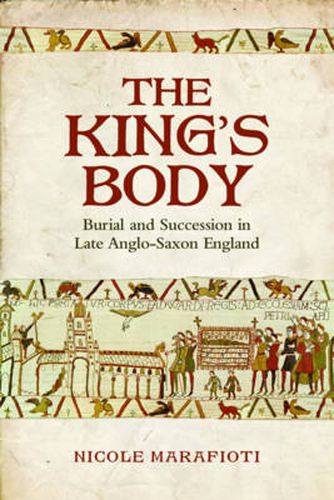Readings Newsletter
Become a Readings Member to make your shopping experience even easier.
Sign in or sign up for free!
You’re not far away from qualifying for FREE standard shipping within Australia
You’ve qualified for FREE standard shipping within Australia
The cart is loading…






The King’s Body investigates the role of royal bodies, funerals, and graves in English succession debates from the death of Alfred the Great in 899 through the Norman Conquest in 1066. Using contemporary texts and archaeological evidence, Nicole Marafioti reconstructs the political activity that accompanied kings’ burials, to demonstrate that royal bodies were potent political objects which could be used to provide legitimacy to the next generation.
In most cases, new rulers celebrated their predecessor’s memory and honored his corpse to emphasize continuity and strengthen their claims to the throne. Those who rose by conquest or regicide, in contrast, often desecrated the bodies of deposed royalty or relegated them to anonymous graves in attempts to brand their predecessors as tyrants unworthy of ruling a Christian nation. By delegitimizing the previous ruler, they justified their own accession. At a time when hereditary succession was not guaranteed and few accessions went unchallenged, the king’s body was a commodity that royal candidates fought to control.
$9.00 standard shipping within Australia
FREE standard shipping within Australia for orders over $100.00
Express & International shipping calculated at checkout
The King’s Body investigates the role of royal bodies, funerals, and graves in English succession debates from the death of Alfred the Great in 899 through the Norman Conquest in 1066. Using contemporary texts and archaeological evidence, Nicole Marafioti reconstructs the political activity that accompanied kings’ burials, to demonstrate that royal bodies were potent political objects which could be used to provide legitimacy to the next generation.
In most cases, new rulers celebrated their predecessor’s memory and honored his corpse to emphasize continuity and strengthen their claims to the throne. Those who rose by conquest or regicide, in contrast, often desecrated the bodies of deposed royalty or relegated them to anonymous graves in attempts to brand their predecessors as tyrants unworthy of ruling a Christian nation. By delegitimizing the previous ruler, they justified their own accession. At a time when hereditary succession was not guaranteed and few accessions went unchallenged, the king’s body was a commodity that royal candidates fought to control.